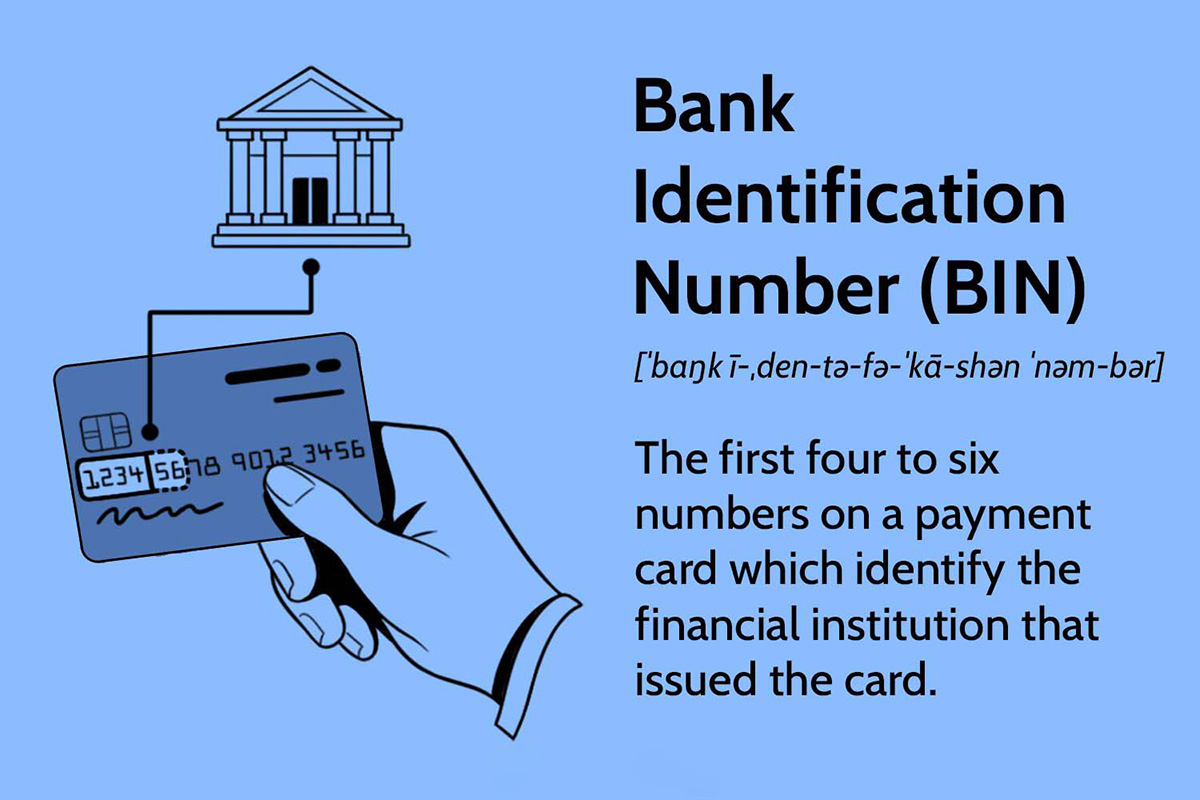

Finance
What Is A Share ID At A Credit Union?
Published: January 9, 2024
Discover what a Share ID is and how it is used in the world of finance at credit unions. Uncover the benefits and functionality of Share IDs at these financial institutions.
(Many of the links in this article redirect to a specific reviewed product. Your purchase of these products through affiliate links helps to generate commission for LiveWell, at no extra cost. Learn more)
Table of Contents
Introduction
Welcome to our guide on understanding Share IDs at credit unions. If you are a member or are considering becoming a member of a credit union, it’s important to familiarize yourself with the concept of a Share ID. This unique identifier plays a crucial role in managing your accounts and accessing various services offered by your credit union.
Share IDs are an integral part of the credit union experience, and understanding them can help you make the most of your membership. In this article, we will delve into what a Share ID is, its purpose, the benefits it offers, how to obtain one, and why it’s essential to protect and secure your Share ID.
Whether you’re a long-time credit union member or just starting your journey with one, having a clear understanding of your Share ID will empower you to navigate financial transactions with confidence and ease.
So, let’s dive in and explore the world of Share IDs at credit unions, uncovering the key aspects that every member should know.
Definition of a Share ID
A Share ID, also known as a Member ID or Account ID, is a unique alphanumeric code assigned to each member of a credit union. It serves as a digital identifier that links you to your specific accounts and membership information within the credit union’s system.
Think of your Share ID as your “membership card” in the digital realm. It distinguishes you from other members and allows the credit union to identify and authenticate your account information.
The structure and format of a Share ID may vary among different credit unions, but it generally comprises a combination of letters, numbers, or both. The length of a Share ID can also vary, depending on the credit union’s system requirements.
When you open an account or become a member of a credit union, you will be assigned a unique Share ID. This ID will be associated with all your accounts and transactions, allowing the credit union to accurately track and manage your financial activities.
It’s important to note that a Share ID is different from other identifiers, such as a username or password. While a username and password are used for accessing online banking or mobile applications, your Share ID is the primary identifier used by the credit union to identify you and link you to your specific accounts.
Now that we have a clear understanding of what a Share ID is, let’s explore its purpose in more detail.
Purpose of a Share ID
The primary purpose of a Share ID is to help credit unions efficiently manage their members’ accounts and provide personalized financial services. Here are some key reasons why Share IDs play a vital role within the credit union system:
- Account Identification: Your Share ID serves as a unique identifier that links you to your accounts within the credit union. It enables the credit union to accurately track and manage your financial activities, such as deposits, withdrawals, and transfers, associating them with the correct member.
- Membership Verification: Credit unions require a Share ID to verify your membership. It ensures that only authorized members can access the credit union’s services and benefits.
- Personalized Service: When you provide your Share ID, credit union staff can quickly access your account information. This allows them to provide personalized assistance, answer account-specific questions, and offer tailored financial solutions to meet your needs.
- Transaction Authorization: Your Share ID is used to authorize financial transactions, such as loan applications, account updates, or fund transfers. It adds an extra layer of security by ensuring that only the account holder has the authority to make changes or perform transactions.
- Account Integration: If you have multiple accounts within the credit union, your Share ID allows for seamless integration and management of those accounts. It enables you to view and manage all your accounts under one membership ID, simplifying your financial management.
Overall, the purpose of a Share ID is to streamline account management, ensure security, and provide personalized financial services to credit union members. It is a critical component of the credit union’s infrastructure, enabling smooth and efficient operations.
Now that we understand the purpose behind Share IDs, let’s explore the benefits they offer to credit union members.
Benefits of a Share ID
Having a Share ID as a credit union member offers a range of benefits that enhance your banking experience. Let’s explore some of the key advantages:
- Convenience: With a Share ID, you can access your accounts and perform various transactions conveniently. Whether you’re using online banking, mobile applications, or visiting a branch, your Share ID ensures quick and hassle-free access to your funds.
- Personalized Service: Credit unions strive to provide personalized service to their members. By using your Share ID to access your account information, credit union staff can address your specific needs and offer tailored financial solutions, making your banking experience more personalized and relevant.
- Account Management: A Share ID enables you to manage all your accounts seamlessly. Whether you have a checking account, savings account, or a loan, your Share ID allows you to view and manage these accounts under a single profile, making it easier to keep track of your finances.
- Financial Planning: Your Share ID provides access to various financial planning tools and resources offered by the credit union. This includes budgeting tools, investment guidance, and educational materials to help you make informed financial decisions for your future.
- Secure Transactions: By using your Share ID for transaction authorization, the credit union ensures that only you, as the account holder, can make changes or perform transactions. This enhances the security of your financial activities, protecting you from unauthorized access.
- Member Benefits: Some credit unions offer exclusive benefits and discounts to their members. By providing your Share ID, you can access these perks, such as lower loan rates, higher interest rates on savings accounts, or discounted fees for certain services.
These benefits highlight the importance of having a Share ID as a credit union member. It not only simplifies your banking experience but also provides you with personalized services and additional advantages that may not be available with traditional banking institutions.
Now that we understand the benefits of a Share ID, let’s explore how to obtain one.
How to Obtain a Share ID
Obtaining a Share ID is a straightforward process for credit union members. Here are the general steps to follow:
- Membership Application: To become a member of a credit union, you need to complete a membership application. This typically involves providing personal information, such as your name, address, contact details, and identification documents. The credit union will use this information to create your Share ID.
- Account Setup: Once your membership application is approved, you will need to set up your accounts. This involves selecting the desired account types, such as checking, savings, or loans, and providing any necessary additional information, such as employment details or joint account holders.
- Share ID Assignment: After your accounts are set up, the credit union will assign you a Share ID. This unique identifier will be linked to your membership information and all your associated accounts within the credit union’s system.
- Notification and Documentation: The credit union will typically inform you of your Share ID through secure communication channels, such as email or mail. They may also provide you with documentation summarizing your membership details, including the assigned Share ID. It’s important to keep this information in a safe and accessible place.
- Activation and Access: Once you receive your Share ID, you can activate it by following the credit union’s instructions. This may involve creating a password or PIN, which will be used alongside your Share ID to access your accounts through online banking, mobile applications, or in-branch services.
It’s important to note that the process of obtaining a Share ID may vary slightly depending on the credit union and their specific requirements. Some credit unions may require additional steps or documentation, while others may have an automated online application process.
If you’re unsure about how to obtain a Share ID or have any questions, it’s best to reach out to your credit union’s customer service or visit their website for more information.
Now that you know how to obtain a Share ID, let’s explore the importance of protecting and securing this unique identifier.
Importance of a Share ID
A Share ID plays a vital role in safeguarding your identity and financial information within the credit union. Understanding the importance of protecting and securing your Share ID is crucial for maintaining the integrity of your accounts. Here are some key reasons why your Share ID should be treated with utmost importance:
- Identity Verification: Your Share ID authenticates your identity as a credit union member. It ensures that only authorized individuals can access your accounts and perform transactions on your behalf. By keeping your Share ID confidential, you minimize the risk of identity theft or unauthorized access.
- Account Security: Your Share ID is an essential component in maintaining the security of your accounts. It acts as a digital lock, ensuring that only you can access and manage your financial information. By protecting your Share ID, you reduce the risk of fraudulent activities or unauthorized changes to your accounts.
- Privacy Protection: Protecting your Share ID is crucial for safeguarding your privacy. It prevents unauthorized individuals from accessing sensitive personal and financial information tied to your credit union accounts. By keeping your Share ID secure, you maintain control over who can access your account details.
- Fraud Prevention: Fraudsters and cybercriminals are constantly looking for ways to exploit personal information for fraudulent purposes. By safeguarding your Share ID, you reduce the risk of falling victim to scams, phishing attempts, or unauthorized transactions. It serves as an additional layer of defense against financial fraud.
- Peace of Mind: Knowing that your Share ID is protected and secure provides peace of mind. It allows you to confidently engage in financial transactions and manage your accounts without constantly worrying about unauthorized access or fraudulent activities.
It’s essential to follow best practices for Share ID protection. This includes never sharing your Share ID with anyone, using strong and unique passwords, regularly monitoring your accounts for any suspicious activity, and promptly reporting any concerns to your credit union.
By understanding the importance of a Share ID and taking the necessary precautions, you can enjoy a secure and worry-free banking experience within your credit union.
Now let’s wrap up our discussion on Share IDs at credit unions.
Protection and Security of Share IDs
Ensuring the protection and security of your Share ID is crucial for maintaining the integrity of your financial accounts and personal information. Here are some essential measures to keep in mind:
- Keep it Confidential: Your Share ID should be treated as confidential information. Avoid sharing it with anyone, including friends, family, or even credit union staff. Remember, the credit union will never ask for your Share ID through email, phone calls, or text messages. It’s important to be cautious of phishing attempts that may try to trick you into revealing your Share ID.
- Use Strong Passwords: When accessing your credit union accounts online or through mobile applications, it’s important to use strong and unique passwords. Avoid using easily guessable passwords and consider enabling two-factor authentication for an extra layer of security.
- Be Aware of Scams: Stay vigilant of potential scams that seek to gain access to your Share ID. Be cautious of suspicious emails, links, or messages that ask for sensitive information, such as your Share ID, password, or financial details. Avoid clicking on suspicious links or providing information unless you are certain of the source’s legitimacy.
- Regularly Monitor Your Accounts: It’s important to regularly monitor your credit union accounts for any unusual activity. Keep an eye on transactions, statements, or any unauthorized changes. Report any discrepancies or concerns immediately to your credit union to ensure prompt action and resolution.
- Update Contact Information: Keep your contact information up to date with your credit union. This ensures that you receive important notifications and alerts regarding your accounts. Regularly check and update your email address, phone number, and mailing address to prevent any potential breaches or unauthorized access.
- Secure Devices and Networks: When accessing your credit union accounts through devices or networks, make sure they are secure. Use trusted and updated antivirus software, avoid using public Wi-Fi networks for sensitive transactions, and ensure your devices are protected with passcodes or biometric authentication.
- Report Suspicious Activity: If you notice any suspicious activity related to your Share ID or credit union accounts, immediately report it to your credit union. They have security measures in place to investigate and address any security concerns, protecting both you and your accounts.
By following these guidelines and being proactive in protecting your Share ID, you can significantly reduce the risk of unauthorized access and potential financial fraud.
Now that we’ve discussed the importance of protecting and securing your Share ID, let’s wrap up our guide on Share IDs at credit unions.
Conclusion
Understanding and valuing your Share ID as a credit union member is essential for a secure and personalized banking experience. This unique identifier links you to your accounts and membership information, allowing the credit union to provide tailored financial services while ensuring your privacy and security.
In this article, we explored the definition of a Share ID and its purpose within the credit union system. We discussed the benefits it offers, such as convenience, personalized service, and enhanced account management capabilities.
To obtain a Share ID, you need to complete a membership application and account setup process with the credit union. Once assigned, it is important to keep your Share ID confidential, activate and securely access your accounts.
We emphasized the importance of protecting and securing your Share ID to safeguard your identity, accounts, and personal information. By following best practices, such as keeping it confidential, using strong passwords, monitoring your accounts, and staying vigilant against scams, you can enhance the security of your credit union experience.
Remember to report any suspicious activity to your credit union and keep your contact information up to date to receive important notifications and alerts regarding your accounts.
By understanding the significance of your Share ID and taking steps to protect it, you can enjoy the convenience, personalized service, and peace of mind that come with being a credit union member.
We hope this guide has provided you with valuable insights into Share IDs at credit unions. As always, if you have any further questions or concerns, reach out to your credit union’s customer service for assistance.














